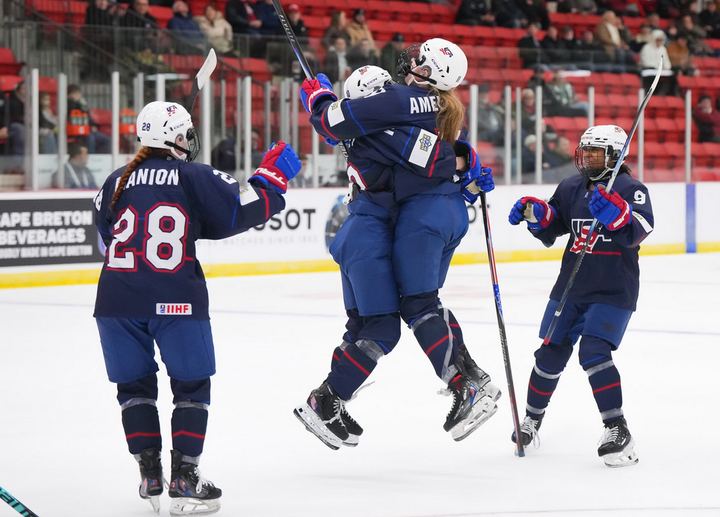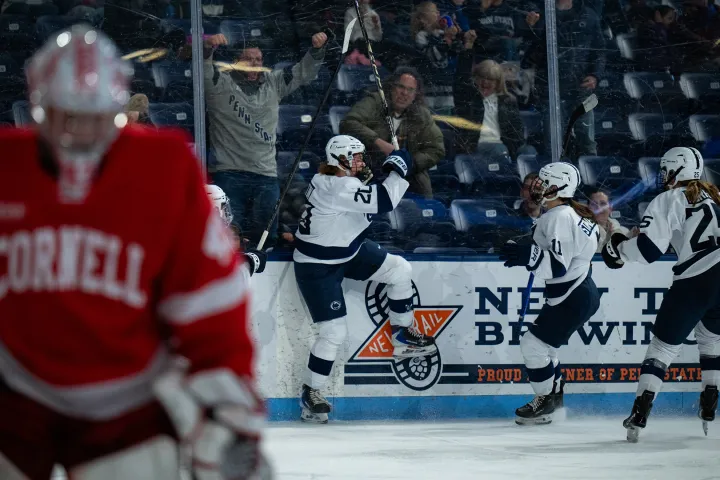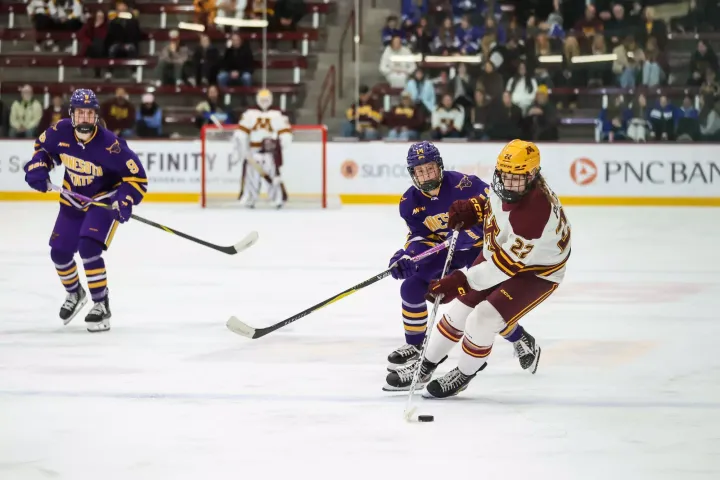Video Review: were the Riveters robbed of a goal?
On Sunday afternoon in Buffalo at the HarborCenter the NWHL’s pressing need for video review entered the spotlight once again.
The visiting New York Riveters were leading 2-1 over the Buffalo Beauts halfway through the second period. At exactly the 10:00 mark Riveters’ rookie forward Miye D’Oench centered the puck in front of the Beauts’ net. The puck made contact with Bray Ketchum’s skate and went up and over Buffalo goaltender Amanda Leveille.
The referee immediately made the “no goal” signal and pointed to center ice, erasing the Riveters’ celebration before it began just as quickly as he erased the team’s 3-1 lead.
The Riveters’ social media presence made their thoughts on the call quite clear.
"kicked it into the net" UH NO WE DIDNT. RUUUUUUDE
— New York Riveters (@NYRiveters) November 13, 2016
Let’s take a look at the controversial “no goal” call in question from Sunday’s game in Buffalo.
There are a few things to focus on in the .gif above.
- Ketchum is in front of the net. Watch her leg and, more specifically, the angle of her skate. She never makes contact with Leveille (which rules out goaltender interference) and her stick is being tied up by Beauts’ captain Emily Pfalzer.
- Make note of where the referee is on the play.
- Make note of the referee’s line of sight on the play./
Let’s take a closer (and blurrier) look at Ketchum on the play.
So, what do you think? Was there a noticeable kicking motion by Ketchum?
Let’s take a look at the NWHL’s official rule book from the 2015-16 season (the only rule book available to the public). specifically the rules relevant to a puck going into the net off of a skate.
[Section Seven, item III (page 21): “Goals with the skate”]
A. No goal will be allowed if the puck enters the goal net as a result of a noticeable kicking motion by an attacking player.
B. A noticeable kicking motion is a movement of the skate along the ice or in pendulum motion as a means of propelling the puck into the goal net.
C. If an attacking skater kicks at a puck and it is subsequently shot into the goal net by either that skater or a teammate after the goaltender has made a save, the goal will be allowed.
D. If an attacking skater kicks the puck and it deflects directly of the goaltender or her equipment, or off a player from either team and into the goal net, the goal will not be allowed.
E. If an attacking skater turns her skate in any manner with the intention of having the puck deflects off it, and the puck enters the goal net as a result of that deflection, the goal will be allowed so long as there was no noticeable kicking motion.
F. If an attacking skater tries to kick the puck from her skate up to her stick but fails to gain possession of the puck with her stick before the puck enters the goal net, the goal will not be allowed because a noticeable kicking motion propelled the puck into the goal net.
G. If an attacking skater is jostling with an opponent and during this time she propels the puck into the goal net with a noticeable kicking motion while trying to maintain his balance, the goal will not be allowed. The noticeable kicking motion is the sole criterion, not the jostling with an opponent.
H. If an attacking skater has the puck on her stick and kicks her stick to propel the puck into the goal net, the goal will not be allowed.
Sections “B” and “E” are especially relevant here. It appears that Ketchum is making an effort to angle her skate to deflect the puck in, but she does move her foot to drive the puck forward... albeit not in a “pendulum-like” motion. So is this a kick? It’s close. Very close.
Wiseman clearly wasn’t a fan of the call that erased his team’s 3-1 lead. But without video review the referee’s call was all that mattered. The call that he made with two skaters passing in front of him the moment the puck met Ketchum’s skate.
Without the benefit of video review the call stood and the goal stayed off the scoreboard. The whistle blew, the puck was dropped and play resumed.
The Beauts would score a power play goal 3:08 later in the period to tie the game. They eventually won the game in overtime after the teams traded goals in the third period.
“We don’t have video replay,” Riveters’ alternate captain Madison Packer shared with The Ice Garden. “If we had video replay, maybe it goes the other way, maybe it doesn’t. But we don’t have the liberty of knowing because we don’t have access to that kind of technology.”
And Ketchum’s disallowed goal wasn’t the only play from Sunday’s game that has Packer and the rest of the Riveters’ wondering if things would be different with video review.
Darkangelo’s overtime goal (assisted by Pfalzer) was also a close call.
Is this clearly a goal by Darkangelo? Or did defender Michelle Picard sweep it off the line in time? Once again, it’s close. Very close. And without an overhead view of the goal line it’s tough for us to get an idea of where the puck is with Picard’s right leg blocking our view.
It’s important to remember that the referee is closer to the play in question and that he has a better angle on what happened than we do with the stream’s camera angle. But that doesn’t change the fact that video review is something that professional women’s hockey needs sooner rather than later.
“I’m still not 100 percent sure that it crossed,” said Riveters’ goaltender Katie Fitzgerald, “But [the referee] called it a goal, so that’s the way it is.”
Even with video review in the NHL there is still plenty of uncertainty and controversy. It’s impossible to remove human error from the equation. And different camera angles tell very different stories, especially in the case of judging when and if a puck has crossed the goal line.
But there is still little doubt that video review helps officials get things right more often than it misleads them. Hockey has always had a gift for breaking hearts. Unfortunately for Riveters fans, that seems to be especially true.
So, what do you think? Did the officials get both of Sunday’s close calls right?
For more on Sunday’s game in Buffalo, check out Erica L. Ayala’s recap.
(note: I am aware of the pronoun mistakes in the language of the NWHL rule book, but I believed it was important to present the text exactly as it is.)





Comments ()